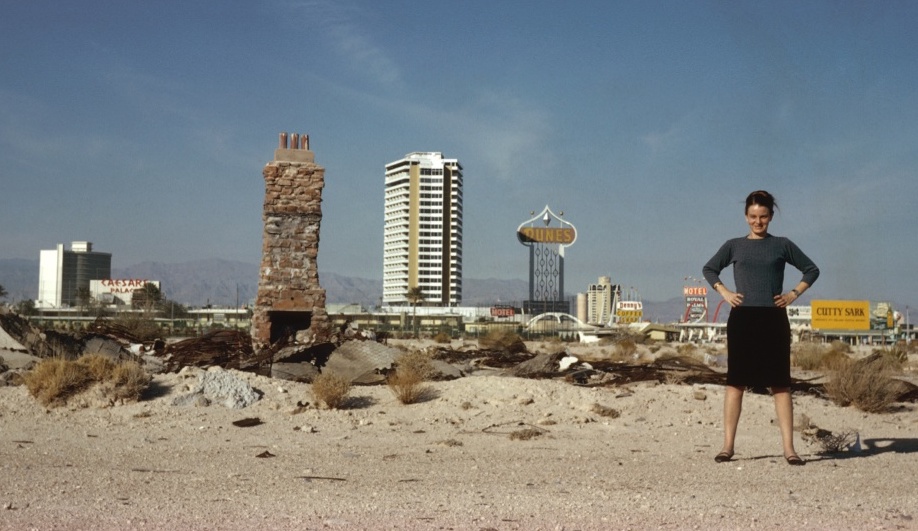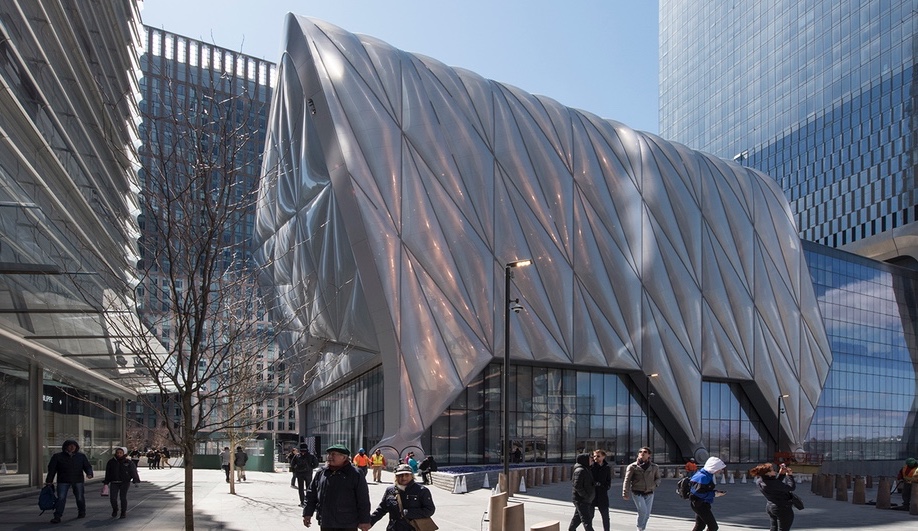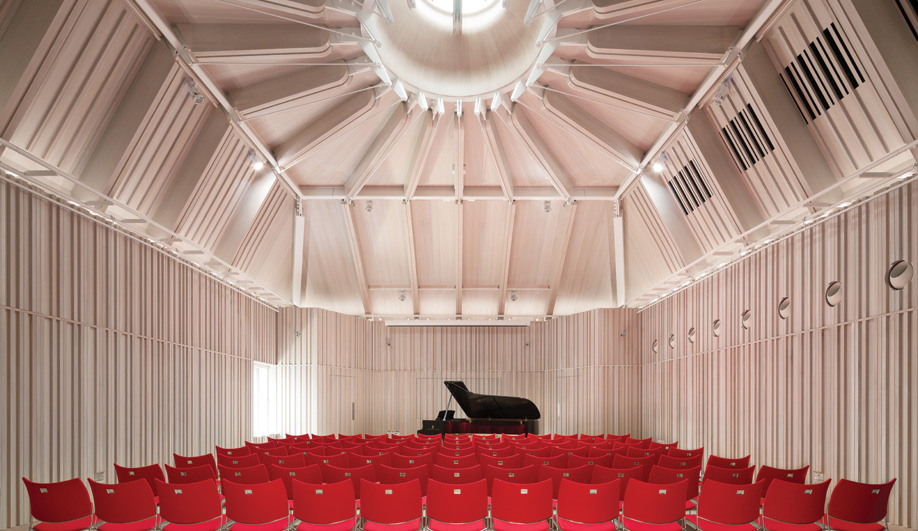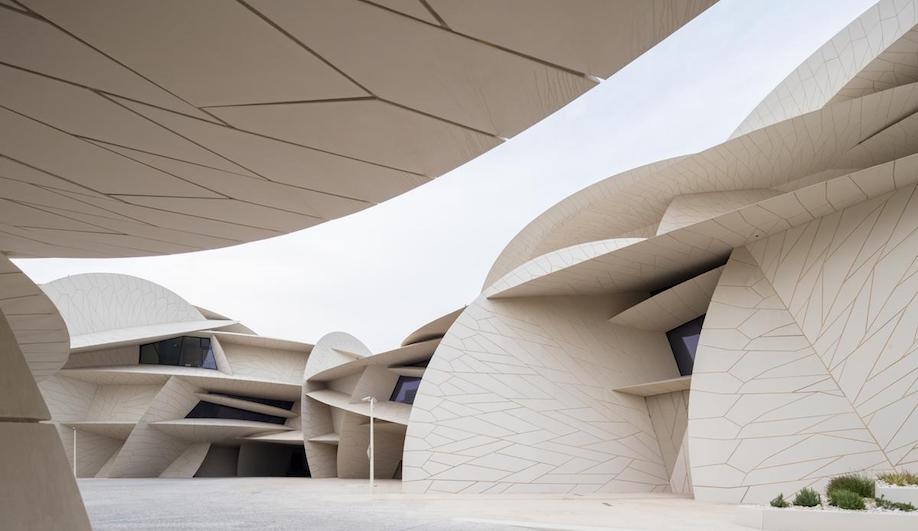
His new home for the Pathé Foundation, squeezed into a courtyard between buildings, takes the shape of a dynamic parasite in an aluminum coil.
At first glance, the Fondation Jérôme Seydoux-Pathé resembles a parasite. Emerging out of a courtyard along Avenue des Gobelins, the entire volume – an amorphous bulge clad in rows of aluminum fins and clinging to the surrounding apartments – recalls a gigantic leech. It has a kinetic quality, too, as if the thing is breathing. Why this peculiar shape to house a centre devoted to the cinematic heritage of Pathé, once the world’s largest supplier of film equipment, and why this difficult location?
The courtyard was the site of one of Paris’s first movie houses, and when 20th-century boulevards arrived the theatre was squeezed inside a block of Second Empire apartments. No longer facing the street, it languished. The gesture to build the foundation’s offices here was a way to honour the city’s cinematic legacy.
Considering Paris’s famously strict heritage and planning legislation, it was a bold move. During the design phase, the architects at Renzo Piano Building Workshop began with a box, then chipped away at it to accommodate the exhaustive building codes. The result was a clunky, angular shape that no one liked, so they tried a new strategy: transforming the angles into sinuous curves.
The next challenge was to arrange the facilities within a five-storey building. The archive and an exhibition space are located on three windowless floors, and a screening room fills the basement, while the ground level remains open, giving lightness to the structure. The entry is a clever sequence of transitions that begins with the historical facade (which contains sculptures by Rodin, no less), leading to an interior glass box and unencumbered views from one end of the courtyard to the other.

Timber ribs, double-curved glass and perforated aluminum fins enclose the top floor offices.
The true expression of the centre’s eccentric form, however, occurs on the top floor. Natural light streams in from the hump-shaped roofline, which is dramatically clad in double-curved glass (needed to engineer its eccentric form). Twenty-seven timber ribs support the oval, while the glass is wrapped in a second skin of perforated aluminum louvres that were calibrated to adjust for privacy and light. A bookcase with a billowing top mimics the expressive ceiling, which is simultaneously open and intimate, with views overlooking the nearby rooftops.
Parasite architecture usually takes the form of rooftop extensions, and it has proven effective for inserting new architecture within historical centres while simultaneously expressing the idea of a dynamic, changing city. With the foundation’s headquarters, Renzo Piano has gone well beyond the roof by filling an entire courtyard. More importantly, the outlandish profile is disguised from the street. Its best feature is the joy of discovering it, and the sensation of wondering what else might be hidden behind the city’s pristine facades.




